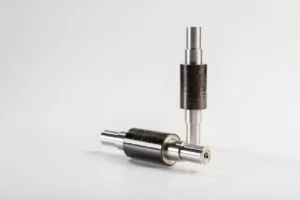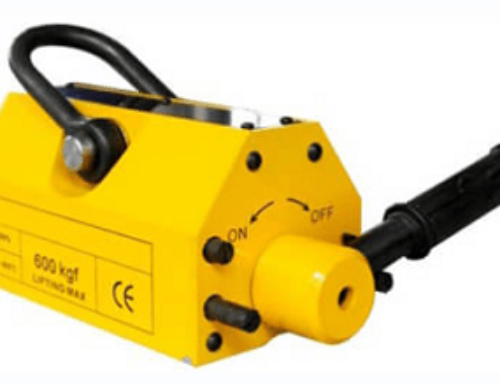Overview of Permanent Magnets
Permanent magnets are materials that produce a stable magnetic field without the need for an external power source. Their ability to maintain magnetization makes them essential components in a wide range of modern technologies.
Types of Permanent Magnets
- NdFeB (Neodymium-Iron-Boron): Known for their exceptional magnetic strength and high energy density, NdFeB magnets are widely used in electric motors, consumer electronics, and renewable energy systems.
- SmCo (Samarium-Cobalt): These magnets offer excellent resistance to high temperatures and corrosion, making them suitable for aerospace, military, and industrial applications.
- Alnico (Aluminum-Nickel-Cobalt): Alnico magnets have good temperature stability and are commonly used in sensors, microphones, and electric guitars.
- Ferrite (Ceramic Magnets): Cost-effective and corrosion-resistant, ferrite magnets are often found in household appliances, loudspeakers, and automotive components.
Key Characteristics
Permanent magnets are indispensable due to their:
- High magnetic energy: Delivering strong magnetic fields in compact sizes.
- Temperature stability: Withstanding varying environmental conditions without loss of performance.
- Corrosion resistance: Ensuring long-term durability in demanding settings.
- Cost-effectiveness: Providing economic solutions across industries.
Recent Advancements
Ongoing research has enhanced the performance and application range of permanent magnets, including:
- Development of rare-earth magnet alloys with improved thermal stability.
- Innovations in magnet coatings to resist corrosion and mechanical wear.
- Enhanced manufacturing techniques that allow for complex shapes and miniaturized designs.
These advancements support new uses across industries, driving the growth of more efficient, durable
Market Trends Driving New Applications
The demand for smaller, more efficient devices is pushing permanent magnet innovations across industries. As products shrink, magnets must maintain or improve their power while fitting into tighter spaces. This miniaturization trend is especially strong in consumer electronics and electric motors.
Sustainability plays a big role too. Green energy initiatives, like wind and solar, rely heavily on high-performance magnetic materials to boost efficiency and reduce energy loss. Permanent magnets are critical for making renewable energy tech more reliable and eco-friendly.
Manufacturing advances also open new doors. Techniques like additive manufacturing and precision molding let designers create magnets with complex shapes and tailored magnetic properties. This flexibility supports smarter, more customized magnet applications.
Regionally, the China APAC market drives much of the growth. Local companies push for cost-effective, high-quality magnets that meet rapid industrial demands. This focus accelerates innovation and affects global trends in permanent magnet uses. For more on the types of magnets and their modern roles, check out permanent magnet applications in modern technology.
Cutting-edge Applications in Different Industries

Permanent magnets are transforming multiple industries thanks to their unique properties and recent innovations. Here’s a quick look at where they’re making a big impact:
Renewable Energy
- Wind Turbines: High-efficiency generators use strong permanent magnets, especially NdFeB magnets, to increase energy output while reducing weight.
- Solar Panels: Permanent magnets help with precise solar panel positioning systems, boosting energy capture throughout the day.
(See more on magnetic materials for renewable energy here)
Electric Vehicles and Transportation
- Electric Motors: Permanent magnets, mainly rare-earth types, are key in high-performance electric motors, improving power density and efficiency.
- Lightweight Materials: Using advanced magnetic materials cuts weight, enhancing battery life and vehicle range.
Consumer Electronics
- Miniature Powerful Magnets: Tiny Neodymium magnets enable compact, yet strong components inside smartphones, tablets, and wearables.
- Magnetic Sensors and Actuators: Essential for IoT devices, these magnets enable precise control and sensing in small packages.
Healthcare and Medical Devices
- MRI Machines & Diagnostics: Permanent magnets provide stable and strong magnetic fields needed for imaging technology.
- Implantable Devices: Small permanent magnets are used in implantable therapies, helping power or control medical equipment inside the body.
Industrial Automation and Robotics
- Magnetic Couplings: Used in robots for contactless torque transmission, improving reliability and lifespan.
- Precision Motors and Bearings: Magnets enhance efficiency and accuracy in conveyor systems and robotic arms.
Emerging Technologies and Innovations
- Magnetic Refrigeration: An energy-efficient cooling technology that uses magnetic materials for eco-friendly refrigeration.
- Wireless Charging and Maglev: Permanent magnets are integral in modern wireless charging setups and magnetic levitation transportation systems.
Challenges and Future Outlook
The world of permanent magnets faces some clear challenges, especially with material scarcity. Rare-earth elements like neodymium and samarium are critical but limited, making recycling more important than ever. Efficient reuse of these materials is key to easing supply pressures while supporting sustainability goals.
Balancing cost and performance also remains a tricky game. High-performance magnets often come with a premium price, so finding ways to optimize both without sacrificing quality is essential for wider adoption, particularly in industries like electric vehicles and renewable energy.
Looking ahead, next-generation magnet materials hold a lot of promise. Alternatives to rare-earth magnets, such as advanced ferrite composites or newly engineered alloys, are being explored to reduce reliance on scarce resources while maintaining strong magnetic properties.
NBAEM is actively involved in this innovation path, focusing on sustainable growth by developing tailor-made magnetic materials that meet modern demands. Their commitment includes improving recyclability and pushing forward research on rare-earth alternatives, supporting U.S. manufacturers and tech developers with materials designed





Leave A Comment